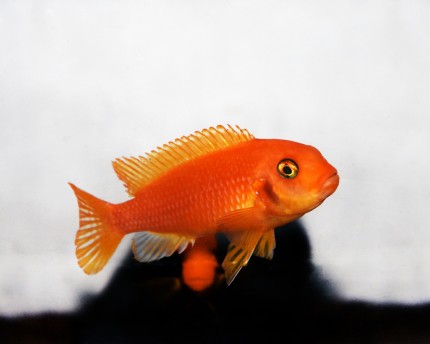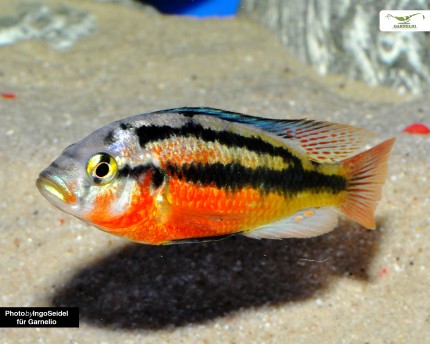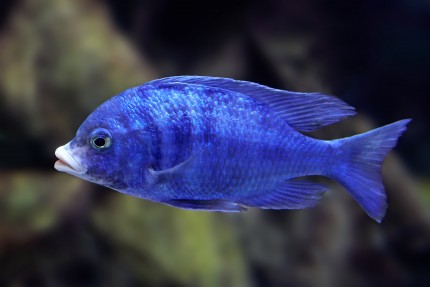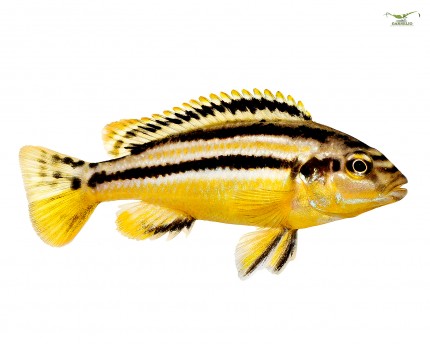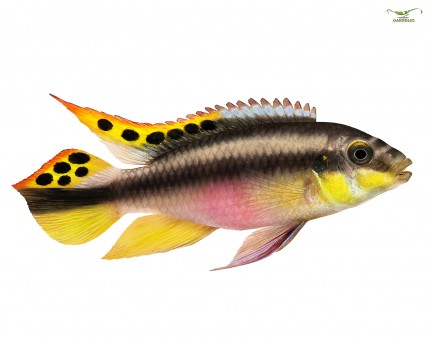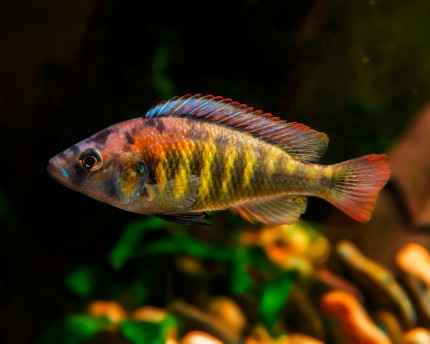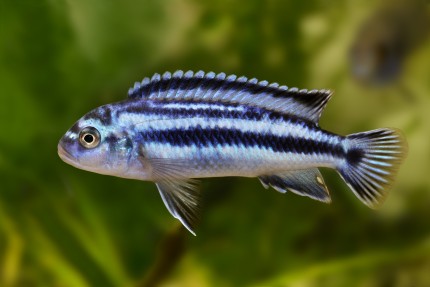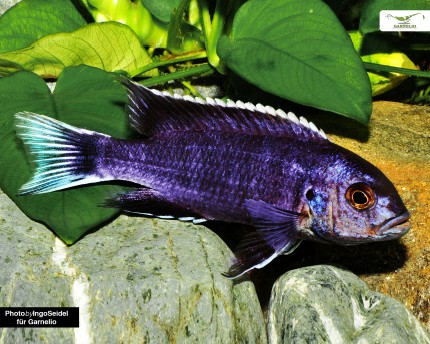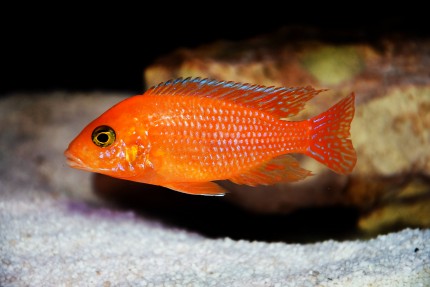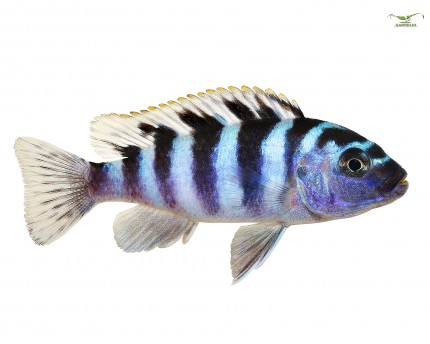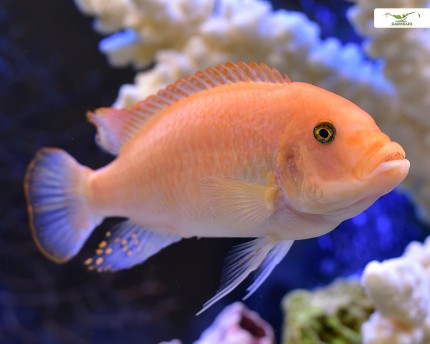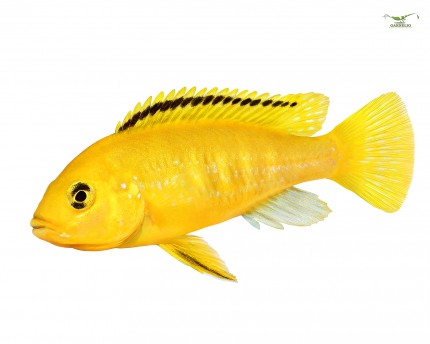Cichlids from Lake Tanganyika
Lake Tanganyika is the second largest lake in the world, right after Lake Baikal. An incredible number of different fish (most of them cichlids) live here in very different biotopes, some of which can be perfectly recreated in the aquarium. Also, the animals are adapted to different food in terms of feeding habits. Therefore, you cannot simply put any cichlid species from Lake Tanganyika in an aquarium with any other cichlid from the same lake.
Socialization of East African cichlids from Lake Tanganyika
Species should be matched by biotopes, and you should never keep large, hardy species with fine petite or delicate Tanganyika cichlids. Tanganyika cichlids are usually very territorial! Please always take animals of only one subspecies or site variant to avoid unwanted mixing. It is best to keep carnivores and hunters with carnivores and hunters, and herbivores with herbivores. Territorial species should only be socialized in sufficiently large aquariums. If in doubt - please opt for a species tank!
For example, open water dwellers go well with bottom dwellers because they do not get in each other's way. The larger the aquarium, the more different species of Tanganyika cichlids can be socialized together. It is better and more species-appropriate to limit yourself to fewer species and increase the number of fish within the species. By no means you should make a bouquet aquarium with cichlids - two red, one blue, three yellow - this is to the detriment of the fish and is not animal-friendly! The aquarium fish are thus subjected to unnecessary stress and can become stunted, sick and even die.
Life zones in Lake Tanganyika
There are different zones in which certain cichlids live and which can be recreated in the aquarium:
- Sand zone, bottom zone, snail shells
- Boulder zone, pebble zone, quarry zone
- Rock zone
- Open water zone
Water values for East African Lake Tanganyika cichlids in the aquarium
The water wanted to be as uncontaminated as possible, so a good filter is absolutely necessary. The water in the lake itself is very clean and has only few pollutants, accordingly the cichlids are sensitive. A temperature of 23-26 °C, a pH value of 8-9 and a carbonate hardness of 14 to a maximum of 22 °dKH have proven to be suitable. The GH, on the other hand, can be rather neglected. Nitrite and ammonium must not be detectable in the water, the nitrate value should not exceed 10 mg/l. This can be achieved - in the absence of plants, which are readily eaten by the cichlids - with an appropriate filter medium such as JBL MicroMec. The filter must be sufficiently dimensioned in any case and must be correspondingly efficient, since in the Tanganyika cichlid aquarium plants are omitted as a natural filter.
Keeping Tanganyika cichlids in the aquarium
The setup should offer vertical crevices and horizontal caves and allow the fish to demarcate their territories and take refuge from too intrusive aquarium mates. For the substrate, choose a water-neutral sand. Gravel cannot be chewed through by the fish and is therefore not recommended as substrate in the cichlid aquarium. Also, bottom-breeding species like to build their nests in the sand - they therefore need as large a free sand area as possible. Depending on the species, the aquarium is set up with rocks (perforated rocks have proven to be good here) with a strong structure or with more free space for swimming. Here it depends exactly on the needs of the individual species and subspecies. Lamprologus for example need a lot of structures, Tropheus on the other hand a lot of swimming space.
A Tanganyika tank is not planted. Although Anubias usually survive the attacks of aquarium fish from Lake Tanganyika in the East African Rift Valley, no higher plants occur at all in the lake itself. The herbivores in the lake feed on green algae turf, which they also like to attack in the aquarium. Algae therefore do not need to be controlled.
Light in the Tanganyika aquarium
Many Tanganyika cichlids live in the lake in greater depths and acknowledge too bright light with discomfort. A rather subdued light source is therefore usually sufficient. Plants do not need to be illuminated anyway.<(ü>
Feeding Tanganyika cichlids
Depending on whether you maintain herbivores or carnivores, the food must be chosen. For carnivores, our NatureHolicCichfeed is a good choice, which is still eaten with great pleasure even by larger fish - also frozen food or live food. Herbivores are well served with a plant food with some meat content - in nature they also do not only eat plants, but ingest quite a considerable amount of microorganisms and small crustaceans with the algae threads they graze on. Natureholic Algae Worms are therefore a good food for these ornamental fish, which can also be supplemented from time to time with NatureHolic Cichfeed, live food or frozen food.
Cichlids from Lake Malawi
lake Malawi in the East African Rift Valley is the third largest lake in the region. It is characterized by relatively soft, very clear water with a high pH. In places, very dense stands of the sea grass-like Vallisneria grow. Lake Malawi is home to a variety of tropical cichlids, which can rival many marine fish with their colorfulness. 600 species are known, it is estimated that again as many unknown species have their habitat there.Also with the "Malawis" there are different location variants and also breeding forms with fascinating, contrasting color play. Malawi cichlids are not quite as territorial as the cichlids from Lake Tanganyika, but they also form territories, which they sometimes defend quite vehemently. In Lake Malawi there are many different biotopes, which are populated by different cichlid species.
Socialization of cichlids from the East African Lake Malawi
Malawi cichlids should be selected for a community aquarium so that their biotopes match. Never socialize robust, rather large species with petite and rather delicate cichlids - this can only be to the detriment of the smaller species. Please always choose only animals of one site variety and also not two closely related subspecies, so that the fish do not mix undesirably. It is best to keep hunting and carnivorous cichlids together, and the herbivores or aufwuchsfresser with herbivores - so feeding will be much easier. For territorial species the aquarium should be large enough and well structured with perforated rocks. In case of doubt a species tank should be given priority!
The group of the so-called Mbunas is one of the largest species schools from Lake Malawi. These rock dwellers are territorial and like to eat growth. You can keep several species of them in one aquarium. However, non-mbunas and mbunas should not be mixed. Basically, the larger and better structured the aquarium is, the more different species of Malawi cichlids you can keep together. However, one should always pay attention to the minimum stocking and not mix individual fish. Flower bouquet aquaristics have no place in the Malawi aquarium! In case of stress these aquarium fishes are very susceptible, they do not eat properly anymore, waste away, get sick or may even die.
Life zones in Lake Malawi
There are essentially three distinct zones in Lake Malawi where certain communities of cichlids live and are replicated in the Malawi Aquarium:
- Sand zone / open water zone
- Boulder zone, pebble zone, quarry zone
- Rock zone
Water values for East African Malawi cichlids in the aquarium
The water wanted to be as uncontaminated as possible, even though Malawi Cichlids are not considered quite as sensitive as Tanganyika Cichlids. A good, sufficiently dimensioned filter is necessary. To reduce the nitrate value - since in the Malawi aquarium usually no or only very robust and slow growing plants are maintained - one should resort to a nitrate reducing filter medium such as JBL MicroMec. An aquarium temperature of 23-28 °C, a pH of 7.5-8.5, a conductance of 200-600 mS and a carbonate hardness of 5 to 7 °dKH corresponding to the natural water values in the habitat. Nitrite and ammonium should be undetectable. Be sure to use an efficient aquarium filter that limits the organic load generated by feeding the fish.
Keeping Malawi cichlids in the aquarium
Depending on the species maintained in the Malawi aquarium, the tank is set up according to the preferences of the cichlids. Cichlids that come from the sand zone or the open water zone need swimming space and larger sand areas. This is especially important for bottom breeders. Crevices and caves provide cover and the opportunity for cichlids to hide from conspecifics. Cichlids from the boulder zone need plenty of structure in the aquarium. Mbuna from the rock zone often graze surfaces and like to hide in crevices. The substrate is ideally water-neutral sand, which the fish like to chew through. Gravel is not optimal for Malawis. People like to use superstructures made of perforated rocks in the Malawi aquarium, which are almost perfect.
A Malawi aquarium is usually not planted because the cichlids would eat the plants anyway. However, Anubias usually survive the feeding attacks of the aquarium fish, so those who want to green the Malawi tank will find well-suited aquarium plants here. Algae belong to the natural food spectrum, especially of the aufwuchsfresser and therefore need not be fought.
Light in the Malawi aquarium
Rather subdued light is well enough for the fish, demanding plants are not maintained in a Malawi aquarium anyway.<(ü>
Feeding Malawi cichlids
Depending on whether you maintain herbivorous or carnivorous aquarium fish in the Malawi aquarium, you need to choose appropriate food. For the carnivores among the Malawi Cichlids our NatureHolic Cichfeed is ideal. It is also readily eaten by the larger ornamental fish among the Malawi cichlids. Frozen and live foods are also a welcome change. Malawi herbivores are well-served by a plant-based diet with a low animal protein content. In the wild, they also eat microorganisms and small crustaceans with the growth and algae they scrape off the rocks. Combined with some frozen food or live food, Natureholic Algae Worms are a good choice for this type of Malawi ornamental fish. You can also supplement with NatureHolic Cichfeed for animal protein.
Other cichlids from Africa
While the cichlids from lakes Malawi and Tanganyika are the most popular and well-known African cichlids, there are other cichlids from the Black Continent that have also made their way into aquaristics. Basically, they are very different because they occur in nature in very different habitats and also have different requirements in the aquarium. They can be socialized more easily than the cichlids from the lakes of the East African Rift Valley and also tend to leave plants alone. However, please always read the description for the respective fish in the article description in our online store.
Breeding of Cichlids from Africa
As different as the habitats, so different is the breeding of cichlids from the African continent. There are mouth breeders, cave breeders, open breeders, ground breeders and more. Breeding of most species in the aquarium is possible and often done. In the article descriptions of the fishes in our online store we give info also about breeding of these beautiful aquarium fishes, which you can buy from us.
Conclusion
The African cichlids are a huge, very heterogeneous group of fascinating aquarium fishes, which can be kept in attractive rock layouts and occasionally even in aquariums planted with robust plants. They are usually relatively easy to breed and they enchant with their lively, very interesting and sometimes almost rowdy, "perky" nature. The colorful African cichlids are fascinating aquarium fish that can even form a relationship with their keeper. An aquarium with cichlids was already for many aquarists the entrance into a fascinating hobby! Here with us in Garnelio's online store you can buy the traditional classic cichlids that have been around forever in the hobby of aquaristics, but also rarer and more difficult to get rarities of cichlids aquaristics.

